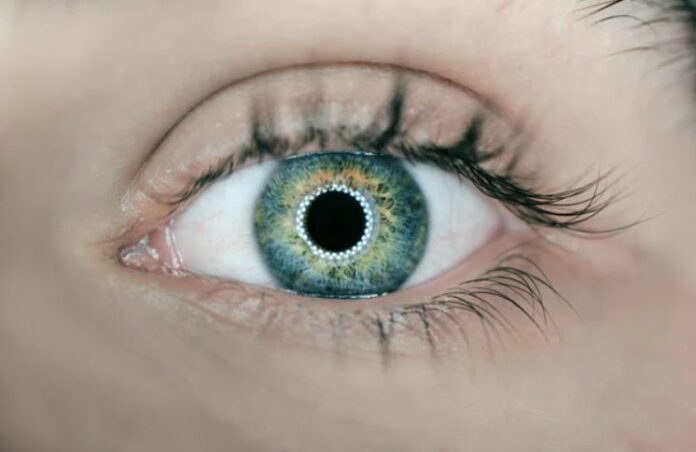Overview Of Diabetic Retinopathy
Diabetes can harm the eyes. It can damage the small blood vessels in the retina, the back part of your eye. This condition is called diabetic retinopathy.
Diabetes also increases the chance of having glaucoma, cataracts, and other eye problems.
Commonly Associated With
Retinopathy – diabetic; Photocoagulation – retina; Diabetic retinopathy; Diabetes and eye disease
Causes Of Diabetic Retinopathy
Diabetic retinopathy is caused by damage from diabetes to blood vessels of the retina. The retina is the layer of tissue at the back of the inner eye. It changes light and images that enter the eye into nerve signals, which are sent to the brain.
Diabetic retinopathy is the main cause of decreased vision or blindness in Americans ages 20 to 74 years. People with type 1 or type 2 diabetes are at risk for this condition.
The chance of developing retinopathy and having a more severe form is higher when:
You have had diabetes for a long time.
Your blood sugar (glucose) has been poorly controlled.
You also smoke or you have high blood pressure or high cholesterol.
If you already have damage to the blood vessels in your eye, some types of exercise can make the problem worse. Check with your health care provider before starting an exercise program.
Other eye problems that can occur in people with diabetes include:
Cataract — Cloudiness of the eye lens.
Glaucoma — Increased pressure in the eye that can lead to blindness.
Macular edema — Blurry vision due to fluid leaking into the area of the retina that provides sharp central vision.
Retinal detachment — Scarring that may cause part of the retina to pull away from the back of your eyeball.
High blood sugar or rapid changes in blood sugar levels often cause blurred vision. This is because the lens in the middle of the eye cannot change shape when it has too much sugar and water in lens. This is not the same problem as diabetic retinopathy.
Symptoms Of Diabetic Retinopathy
Most often, diabetic retinopathy has no symptoms until the damage to your eyes is severe. This is because damage to much of the retina can occur before your vision is affected.
Symptoms of diabetic retinopathy include:
Blurred vision and slow vision loss over time
Floaters
Shadows or missing areas of vision
Trouble seeing at night
Many people with early diabetic retinopathy have no symptoms before bleeding occurs in the eye. This is why everyone with diabetes should have regular eye exams.
Exams & Tests
Your eye doctor will examine your eyes. You may first be asked to read an eye chart. Then you will receive eye drops to widen the pupils of your eyes.
Tests you may have involve:
Measuring the fluid pressure inside your eyes (tonometry)
Checking the structures inside your eyes (slit lamp exam)
Checking and photographing your retinas (fluorescein angiography)
If you have the early stage of diabetic retinopathy (nonproliferative), the eye doctor may see:
Blood vessels in the eye that are larger in certain spots (called microaneurysms)
Blood vessels that are blocked
Small amounts of bleeding (retinal hemorrhages) and fluid leaking into the retina
If you have advanced retinopathy (proliferative), the eye doctor may see:
New blood vessels starting to grow in the eye that are weak and can bleed
Small scars forming on the retina and in other parts of the eye (the vitreous)
This exam is different from going to the eye doctor (optometrist) to have your vision checked and to see whether you need new glasses. If you notice a change in vision and see an optometrist, make sure you tell the optometrist that you have diabetes.
Treatment Of Diabetic Retinopathy
People with early diabetic retinopathy may not need treatment. But they should be closely followed by an eye doctor who is trained to treat diabetic eye diseases.
Once your eye doctor notices new blood vessels growing in your retina (neovascularization) or you develop macular edema, treatment is usually needed.
Eye surgery is the main treatment for diabetic retinopathy.
Laser eye surgery creates small burns in the retina where there are abnormal blood vessels. This process is called photocoagulation. It is used to keep vessels from leaking, or to shrink abnormal vessels.
Surgery called vitrectomy is used when there is bleeding (hemorrhage) into the eye. It may also be used to repair retinal detachment.
Medicines that are injected into the eyeball may help prevent abnormal blood vessels from growing.
Follow your eye doctor’s advice on how to protect your vision. Have eye exams as often as recommended, usually once every 1 to 2 years.
If you have diabetes and your blood sugar has been very high, your doctor will give you new medicines to lower your blood sugar level. If you have diabetic retinopathy, your vision can get worse for a short time when you begin taking medicine that quickly improves your blood sugar level.
Others
Outlook (Prognosis)
Managing your diabetes may help slow diabetic retinopathy and other eye problems.
Control your blood sugar (glucose) level by:
Eating healthy foods
Getting regular exercise
Checking your blood sugar as often as instructed by your diabetes provider and keeping a record of your numbers so you know the types of foods and activities that affect your blood sugar level
Taking medicine or insulin as instructed
Treatments can reduce vision loss. They do not cure diabetic retinopathy or reverse the changes that have already occurred.
Possible Complications
Diabetic eye disease can lead to reduced vision and blindness.



